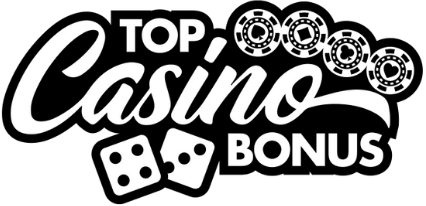Optimal strategy for multi-hand video poker games
In multi-hand video poker, every hand you play multiplies the stakes, and the complexity. These machines look deceptively straightforward, especially to folks raised on traditional five-card draw. But once you add multiple hands, variable strategy depths, and tiered payouts based on bet size, it becomes a high-wire act with subtle balance points. If you don’t approach it with foresight, discipline, and a structured plan, your bankroll won’t last long.
Table of contents
Understanding the multi-hand format
Single-hand video poker trains players to focus exclusively on optimizing one hand at a time. But in multi-hand games, be it 3-play, 10-play, or 100-play, you select a single set of cards to hold. That initial hold then locks across all hands, and each hand draws a unique set of replacement cards. That changes everything.
Why most players fail in multi-hand play
Folks come in all bright-eyed, thinking they’ve got the basics down from single-hand strategy. But when every hold has to work for dozens of hands with different outcomes, that changes the EV calculations real fast. The real kicker? Low-value draws become pit traps in multi-hand formats. You have to focus on consistency and risk-weighted expected value, not just hopeful chases.
Developing an optimal game strategy
To thrive in multi-hand video poker, you’ve got to recalibrate what optimal even means. You’re not just maximizing return over one play, you’re minimizing variance across dozens of interlinked hands. You need sharp analytical instincts, but also the insight to know when caution trumps aggression.
Stick to full-pay variants
First things first: always pick full-pay machines. A 9/6 Jacks or Better (9 for a full house, 6 for a flush) has a return of roughly 99.54% with perfect play. Anything less, and you’re volunteering for slow death by house edge. Always check paytables before putting your money in. Those decimals matter more than modern players realize.
Bet max coins
This is non-negotiable. The royal flush only delivers its true 800-to-1 on a maximum-coin bet. Without that, your long-term return drops like a rock. It’s like showing up to a gunfight with blanks. If five-coin bets across 100 hands are out of your league, drop the number of hands, but not the coin size.
Use modified hand-ranking logic
In multi-hand scenarios, ignore the temptation to chase unlikely draws. Pairs, suited connectors, and 4-to-a-straight flush combos with high-card safety nets are where you stay profitable. A Jack-high straight draw might be a calculated risk in single-hand play, but across ten hands, it bleeds you out slowly.
Track variance like an engineer
If you don’t measure it, you can’t control it. I keep a simple spreadsheet tracking actual versus expected return every 5,000 hands. Over time, it tells you if you’re slipping or if the variance is just biding its time. You’d be amazed how quickly errors add up, and how easily a 0.5% edge can be erased by sloppy holds.
Training and tool integration
Even old-school tacticians like me know it pays to use modern tools, if they’re used wisely. You want tools that hone your skill, not ones that replace your brain. Relying too much on apps makes you soft. It’s like plugging in a GPS for a walk around the block.
Video poker trainers
Opt for simulators that let you drill specific problem areas, low pairs, suited connectors, high-card combinations. Stick to full-pay settings during training. And most crucially: always analyze why a mistake happened. Don’t mindlessly follow prompts. Understand the “why.”
Variance simulators
If you’re playing 100 hands at once, variance can spin large. Use simulators that show statistical volatility over varying sample sizes. If your long-term expectation assumes thousands of hours of perfect play, you better be resilient enough to endure the storm in between.
Know where to play
Not all online casinos handle multi-hand poker with the same fairness or functionality. Some platforms throttle RTP, use inconsistent shufflers, or don’t even display full paytables. Stick to reviewed operators where multi-hand strategy isn’t undermined by backend manipulation or poor UX.
- At Dunder Casino, the interface is clean and the payout info is fully transparent, which is rare these days.
- Casino Cruise has consistently fast game processing, a crucial detail when running 50 or more hands at once.
- I’ve found Casumo particularly useful during test runs, due to the detailed play history logs. Perfect for post-session analysis.
- For those seeking something a bit off the beaten path, Chance Hill maintains stellar integrity when offering paytable transparency.
Managing bankroll like a pro
This is the part most players skip, or worse, fake. Your bankroll isn’t entertainment money. It’s capital. Multi-hand play demands 20–30x the bankroll of single-hand formats, because session swings are brutal. I’ve watched seasoned players torch entire bankrolls in under 10 minutes on 50-play Jacks or Better.
Define stop-loss and win goals
Set them before a single hand is played. Stop losses should be 10–15% below your session bankroll. Win limits around 20% are solid to prevent greed-induced blowouts. If you ride a heater too long, variance will grab the wheel and send you off a cliff.
Segment your bankroll
I break mine into 5-session partitions. Each pack represents an independent play unit. If I burn through one, I don’t touch the next unless I’ve reviewed what went wrong. It’s battlefield discipline, no second chances without analysis.
Final thoughts on master-level play
Multi-hand video poker isn’t for the faint of heart. It’s edge stacked upon edge, where automated reflexes won’t save you. You’ve got to be equal parts analyst and gut-player. Newcomers often get wrapped up in finishes and bonuses, losing sight of the slow grind rewards. Don’t chase jackpots, chase precision.
Optimal play always starts with small edges wielded with ruthless consistency. Reminds me of the debate around dice control in craps, is it myth, or skill? Same principle. It’s not just about theory, it’s about minimizing error, managing swing, and practicing conscious control.
When people ask me how to “win” at multi-hand video poker, I tell them: it’s not about winning. It’s about outlasting, outcalculating, and outdisciplining the house. One hand at a time. Across one hundred hands at a time.





0 Comments